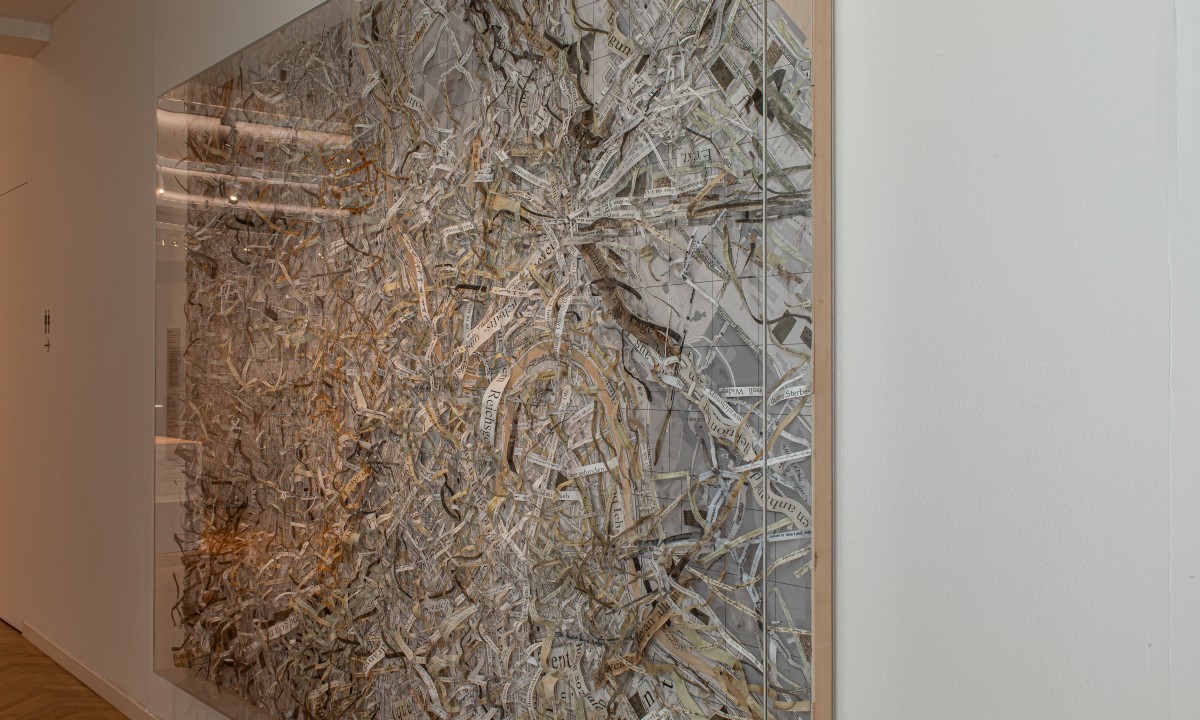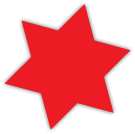Close Up of 7th District in Bottom Middle
02. April 2025
Close up
A Map With 1000 Words
by Grace Suter
Memory Map
Nikolaus Gansterer
2013
Paper, Glue, Nails, Plywood
202.5 x 303 x 16 cm
Donated by Nikolaus Gansterer and The Vienna Project
As an intern walking through the permanent exhibit, “Our City! Jewish Vienna – Then to Now,” at the Jewish Museum on Dorotheergasse for the first time, I was drawn to the collage tucked aside in the hallway leading to the second floor bathrooms. Its late edition to the exhibit could contribute to its “hidden” placement, but it’s a piece worth looking out for. The only piece of its kind in the exhibit, the Memory Map by Nikolaus Gansterer stands out among the paintings and photographs surrounding it. With three layers simultaneously complementing but covering each other, the Memory Map pieces together a general map of the city from before 1945 and slips of paper from letters between Viennese Jewish individuals as they wrote about the deportations that happened during World War II.
The Memory Map was originally an idea for a three-dimensional virtual map on “The Vienna Project” app to assist in navigating the thirty-eight sites around the city partaking in an artistic memorial experience about the Nazi era. However, the artwork quickly became more than a simple online navigation tool. Director of the project, Karen Frostig, commissioned the artwork to bring the idea of a 3D map to life. The piece renders primary accounts of Shoah survivors tangible. As “The Vienna Project” was a temporary endeavor, active from October 2013-October 2014, the donation of the physical map to the Jewish Museum in 2014 allows its attestation of Jewish resilience to continue into a new decade.
As someone who went into the exhibit without knowing what the collection consisted of, I never expected a piece with so many small nuances. The longer one stares at the collage, more and more aspects seem to pop up. At first, I could not tell what it was referring to with the three highlighted areas of the map, but the longer I stood and stared, they appeared out of the masses of paper. The fact that the destruction is covered up struck me as it comments how people might not recognize the lives extinguished without explicitly searching for them. It displays how it is the task of people living in the twenty-first century to maintain the legacy of Jewish communities. The hundreds of paper slips nailed to the map feels purposeful in its representation of the chaos Jewish individuals faced in 1938, in addition to displaying the actual words of those affected by the deportations and devastation. With so much going on within the map, a large map at that, the darting of my eyes around the letters symbolizes the feeling of panic of the time. The longer I looked around the papers, all the different lines Gansterer printed out and affixed to the map become apparent.
The layering effect of the Memory Map allows viewers, like myself, to experience different feelings and happenings of World War II, intertwining twining various fragments into one. The combination of the three aspects into one map makes it that much more impactful, not only because of the size and medium, but also because of the mood it imposes on the viewer.
Nikolaus Gansterer
2013
Paper, Glue, Nails, Plywood
202.5 x 303 x 16 cm
Donated by Nikolaus Gansterer and The Vienna Project
As an intern walking through the permanent exhibit, “Our City! Jewish Vienna – Then to Now,” at the Jewish Museum on Dorotheergasse for the first time, I was drawn to the collage tucked aside in the hallway leading to the second floor bathrooms. Its late edition to the exhibit could contribute to its “hidden” placement, but it’s a piece worth looking out for. The only piece of its kind in the exhibit, the Memory Map by Nikolaus Gansterer stands out among the paintings and photographs surrounding it. With three layers simultaneously complementing but covering each other, the Memory Map pieces together a general map of the city from before 1945 and slips of paper from letters between Viennese Jewish individuals as they wrote about the deportations that happened during World War II.
The Memory Map was originally an idea for a three-dimensional virtual map on “The Vienna Project” app to assist in navigating the thirty-eight sites around the city partaking in an artistic memorial experience about the Nazi era. However, the artwork quickly became more than a simple online navigation tool. Director of the project, Karen Frostig, commissioned the artwork to bring the idea of a 3D map to life. The piece renders primary accounts of Shoah survivors tangible. As “The Vienna Project” was a temporary endeavor, active from October 2013-October 2014, the donation of the physical map to the Jewish Museum in 2014 allows its attestation of Jewish resilience to continue into a new decade.
As someone who went into the exhibit without knowing what the collection consisted of, I never expected a piece with so many small nuances. The longer one stares at the collage, more and more aspects seem to pop up. At first, I could not tell what it was referring to with the three highlighted areas of the map, but the longer I stood and stared, they appeared out of the masses of paper. The fact that the destruction is covered up struck me as it comments how people might not recognize the lives extinguished without explicitly searching for them. It displays how it is the task of people living in the twenty-first century to maintain the legacy of Jewish communities. The hundreds of paper slips nailed to the map feels purposeful in its representation of the chaos Jewish individuals faced in 1938, in addition to displaying the actual words of those affected by the deportations and devastation. With so much going on within the map, a large map at that, the darting of my eyes around the letters symbolizes the feeling of panic of the time. The longer I looked around the papers, all the different lines Gansterer printed out and affixed to the map become apparent.
The layering effect of the Memory Map allows viewers, like myself, to experience different feelings and happenings of World War II, intertwining twining various fragments into one. The combination of the three aspects into one map makes it that much more impactful, not only because of the size and medium, but also because of the mood it imposes on the viewer.
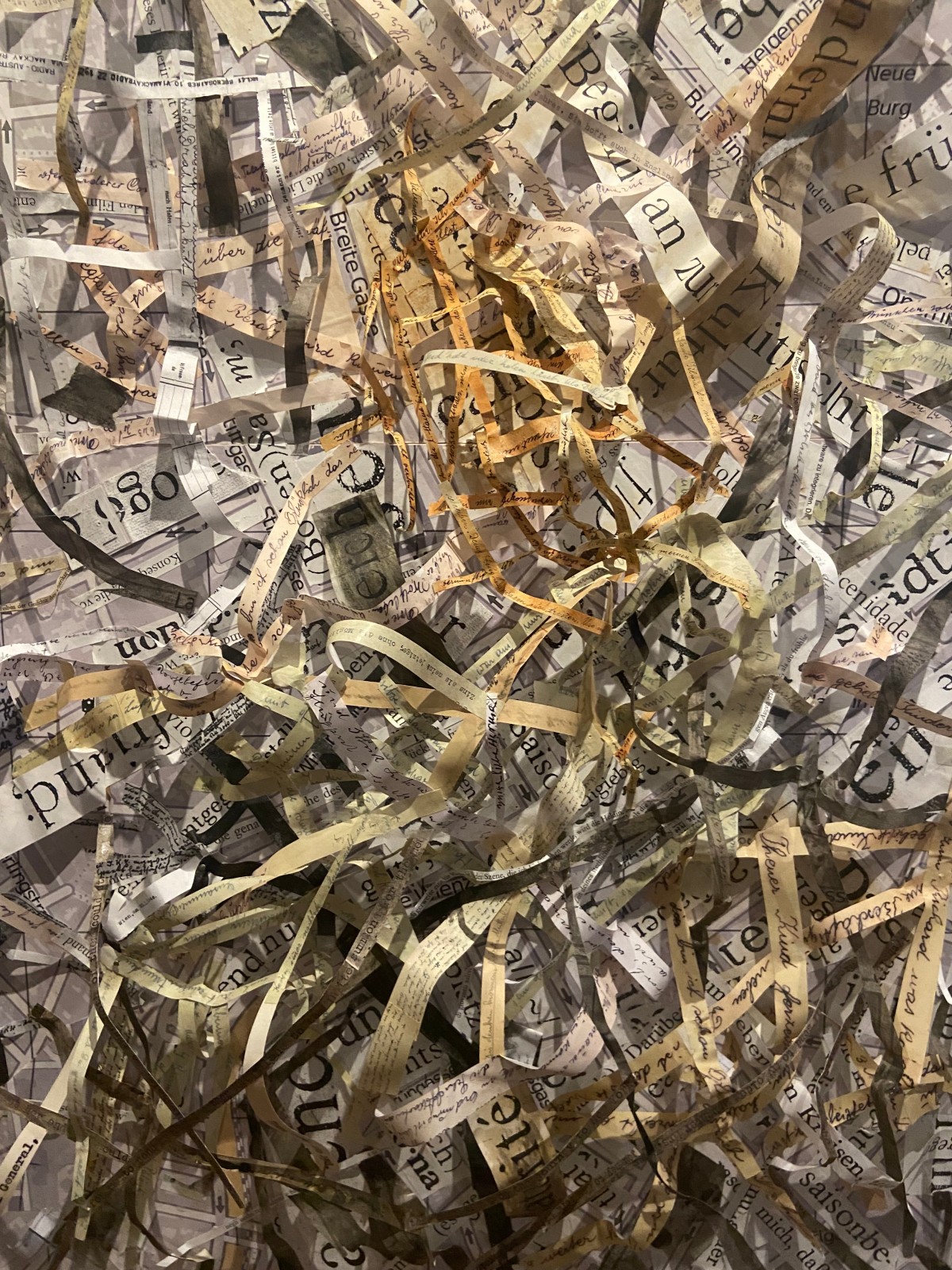
© Grace Suter
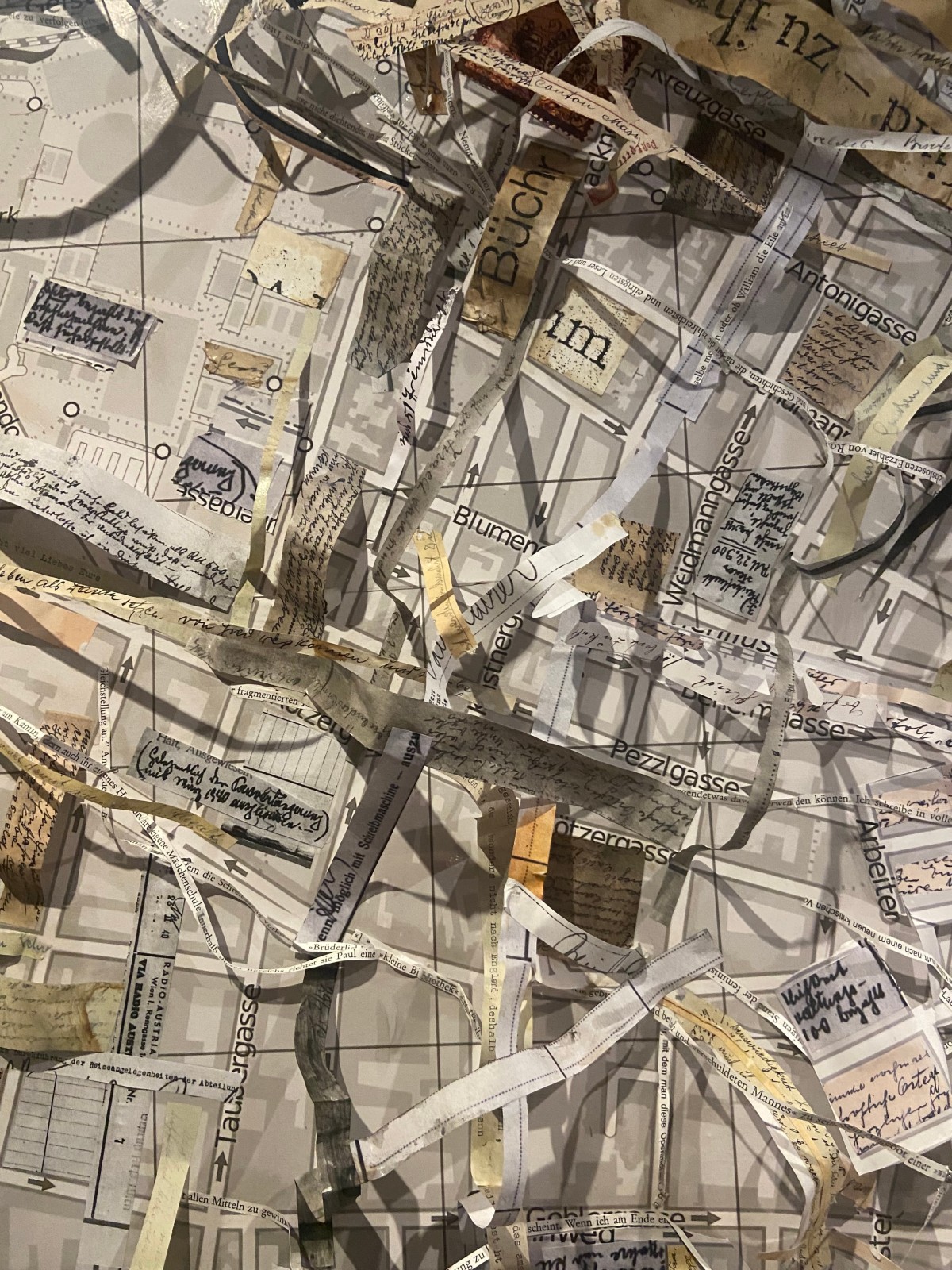
© Grace Suter
Close up of 17th District in Top Left Corner
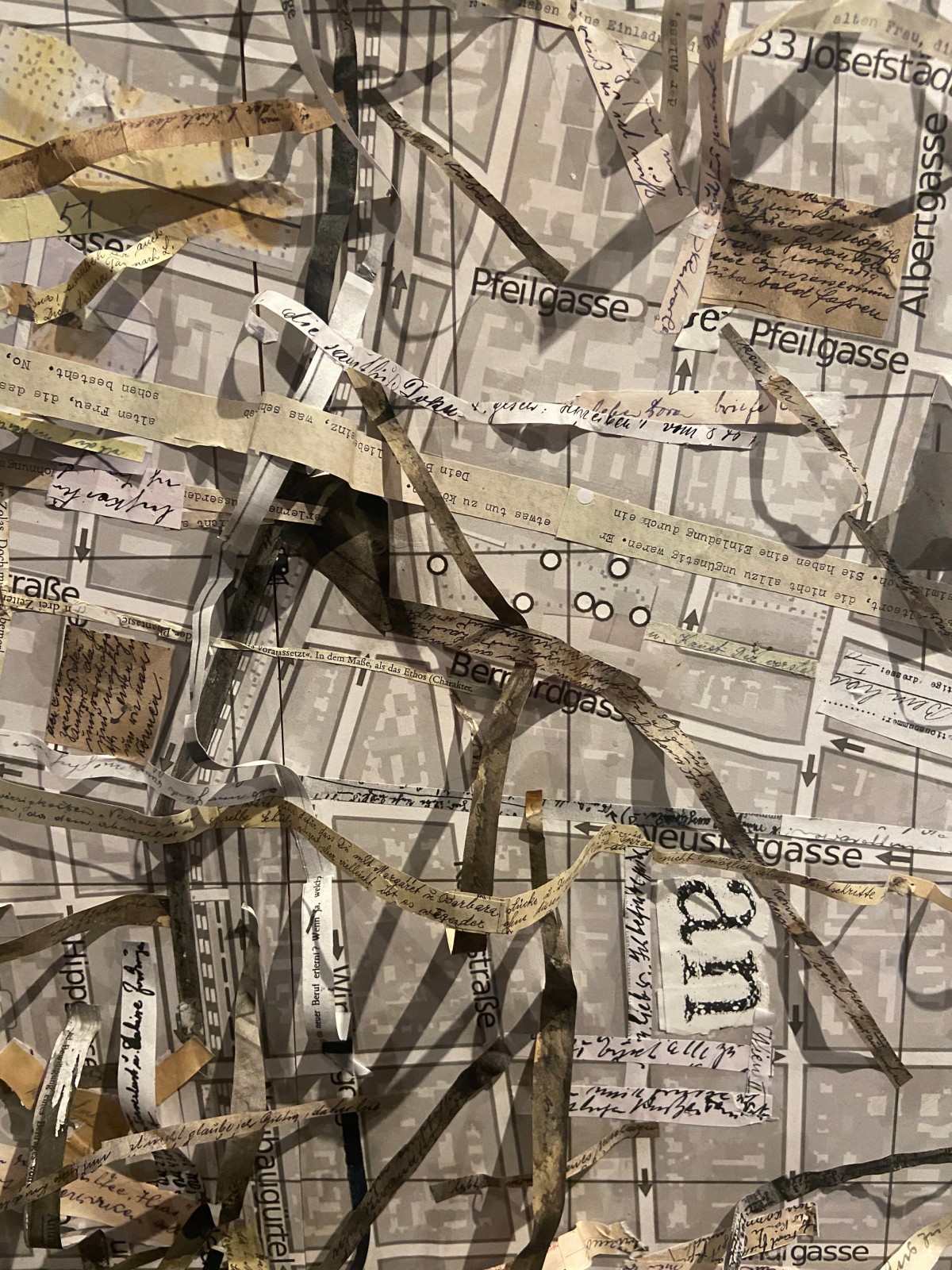
© Grace Suter
Close up of 8th District on Bottom Left
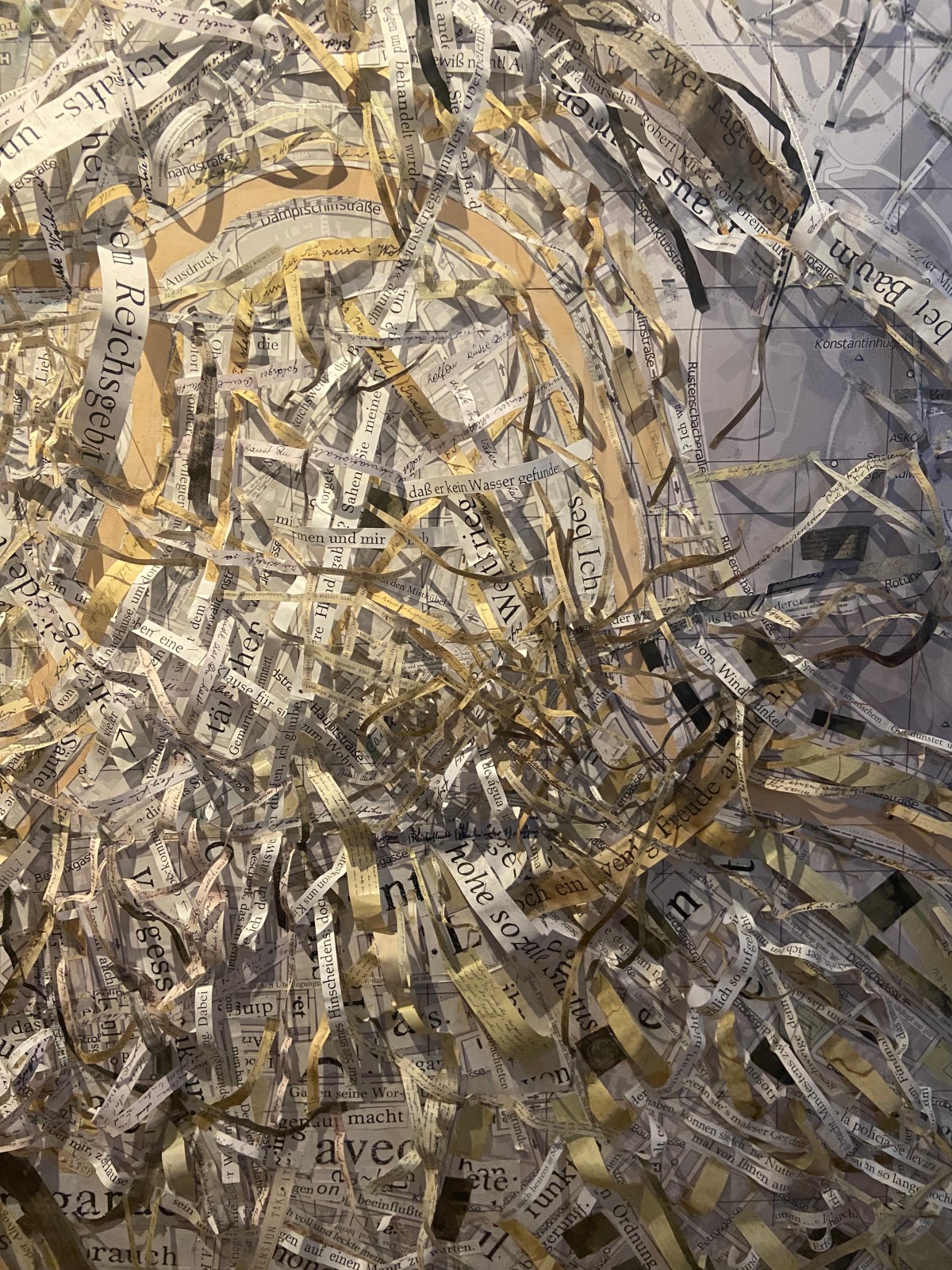
© Grace Suter
Close up of 3rd on Bottom Right
